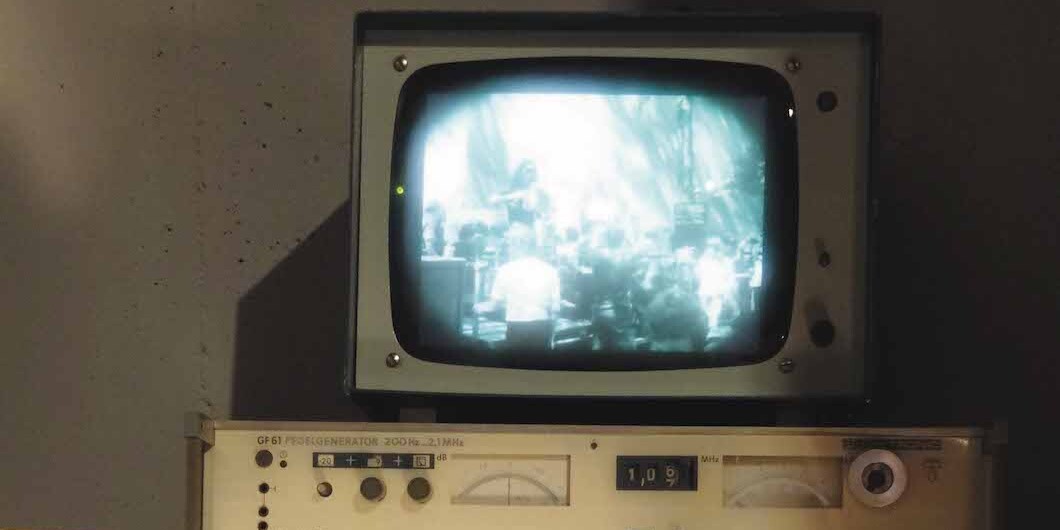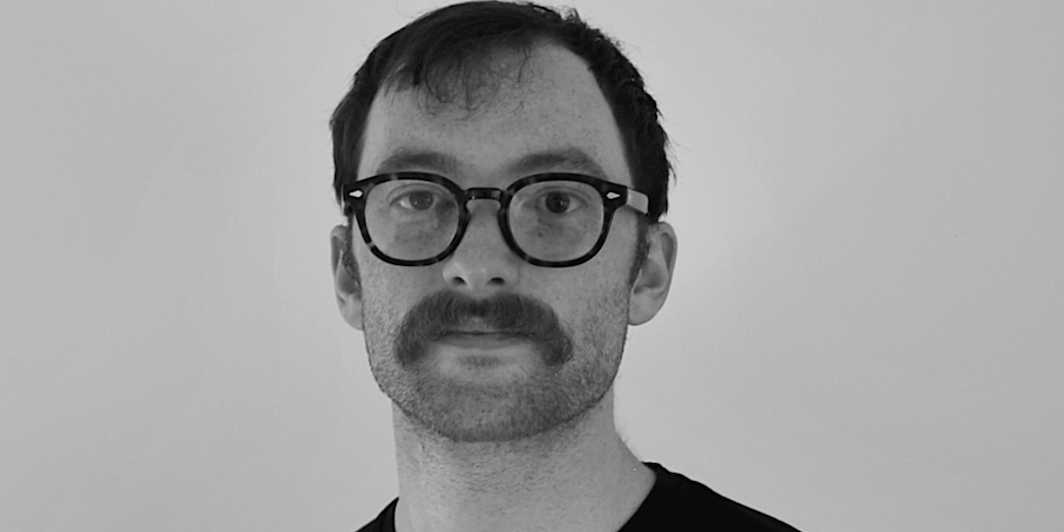IT WAS THE FALL of the Berlin Wall that prompted Jenny Erpenbeck to become a writer, as if the beliefs and structures guiding her life that had, almost overnight, been rendered obsolete, could be recuperated by language. But Erpenbeck, born steps from the Wall in 1967, wasn’t interested in memoir or commemoration. She preferred tricks of self-effacement, recursion, deferral, anything that lent “freedom from the compulsion of realism.” Her debut, The Old Child (1999), is a parable of a loser’s triumph: a young woman posing as a fourteen-year-old goes to live in a children’s home, turning life into a game
- print • Summer 2023
- print • Summer 2023
I LOVE NOVELS WITH INCREDIBLE review quotes on the cover, the kind that make you feel around for your wallet. Gabriel García Márquez’s One Hundred Years of Solitude, for one, lured me with a doozy by William Kennedy from the New York Times Book Review, who called it “the first piece of literature since the Book of Genesis that should be required reading for the human race.” The best quotes follow you around as you read, subtly inflecting your experience, perhaps even shaping your final, favorable judgment. (“Hey—this is kind of like the Book of Genesis!”)
- • December 29, 2022
The Ishiguro blurb (“The most exciting discovery I’ve made in fiction for some time”) might be designed to entice skittish readers of literary fiction into committing to six hundred pages of horror. Who better than the SF-dabbling Nobel laureate to assure us that we can indulge our genre pleasures and remain serious people? Mariana Enriquez’s Our Share of Night, her first novel to be translated into English, comes well weighted with prestige-ballast: the novel won the 2019 Herralde Prize awarded by the Spanish publishing house Anagrama, and her second story collection, The Dangers of Smoking in Bed, was shortlisted for
- • Dec/Jan/Feb 2023
NO ONE KNOWS how long Petronius’s Satyricon was or even if its author really is Petronius, a Roman courtier and arbiter elegantiae, official tastemaker, to Nero. Many parts of the Satyricon are lost. By some estimates, the complete opus may have been as long as Marcel Proust’s In Search of Lost Time. And like In Search of Lost Time, the Satyricon is a work in which life and death may hang on the course of a dinner party. The host of the hedonistic gathering at the heart of Petronius’s prosimetrum (a Latin genre that mingles poetry and prose) is Trimalchio,
- • Dec/Jan/Feb 2023
WHEN BARBARA SMITH describes Toni Morrison’s Sula as an “exceedingly lesbian novel” in her pathbreaking essay “Toward a Black Feminist Criticism,” she stops just short of calling either of the book’s main characters the L word. Sula, which sumptuously tells the story of a pair of Black girls learning how to become Black women in a world that aims to constrain their desires, reveals the depths of intimacy available to women when they focus on cultivating relationships with each other rather than seeking communion with men. For Smith, a woman deriving pleasure for herself “functions much like the presence of
- • Dec/Jan/Feb 2023
“WE WONDER at our shifting capacities, keep / adding and striking skills / from the bottoms of our résumés / under constant revision / like the inscriptions on tombs,” Anna Moschovakis writes in her 2011 poetry collection You and Three Others Are Approaching a Lake. E, the sometimes-narrator of Moschovakis’s new novel Participation, would likely feel at home in this “we”: she has three jobs, or, as she later corrects herself, “tall piles of tasks—paid, unpaid, underpaid—at every moment.” In one of capitalism’s many depraved ironies, these multiple tasks don’t multiply her income. Instead, the most stable of her jobs—at
- • Dec/Jan/Feb 2023
HOW SPECIAL is New York City? Is it the greatest, most exciting, most alive-seeming city on the North American continent? If you think so, would you say as much to people who live in Los Angeles, or Montreal? Would you build a large-scale, world-shaping fantasy series around the idea?
- • Dec/Jan/Feb 2023
“BEAUTY, WOMEN’S BUSINESS IN THIS SOCIETY, is the theater of their enslavement,” laments Susan Sontag in her 1972 meditation on aging and femininity. “Only one standard of female beauty is sanctioned: the girl.” It is no accident that women must look like girls to qualify as beauties, for they must also act like girls to qualify as women. “The ideal state proposed for women is docility, which means not being fully grown up,” Sontag continues. Only two ages are available to women: infantile—and too old.
- • Dec/Jan/Feb 2023
NOMINALLY, LYDIA MILLET’S TWELFTH NOVEL, Dinosaurs, takes its title from the birds that inhabit the Arizona desert in which the book is set. But it also refers to Millet’s protagonist Gil, a kind, aimless man in his mid-forties. Orphaned in early childhood, he inherited a fortune at age eighteen and, when we meet him, is both ashamed of being “disgustingly rich” and fixated on finding the single “best way to contribute.” He’s so terrified of doing wrong that he’s spent his adulthood doing little but clinging to an unhappy relationship, volunteering at a series of nonprofits, and yearning to be
- • Dec/Jan/Feb 2023
BORN DAVID CORNWELL in 1931, John le Carré was too young to go to war and thus too young to experience Britain’s patriotic struggle with Nazi Germany from inside the intelligence service, too young to have worked in alliance with the Soviet Union, and much too young to have been a university student in the 1930s, when many idealistic young Britons joined with the Communists because they were the staunchest opponents of fascism. He was sent to boarding school at the age of five, and it left him with a bitter feeling toward his country’s ruling institutions, even as he would
- • Dec/Jan/Feb 2023
ONE OF SAM LIPSYTE’S SIGNATURE ACCOMPLISHMENTS has been to find the baroque musicality in the emergent vocabularies—commercial, bureaucratic, wellness-industrial, pornographic—opened up by twenty-first-century English. “Hark would shepherd the sermon weirdward,” he writes in his 2019 novel about an entrepreneurial inspirational speaker, “the measured language fracturing, his docile flock of reasonable tips for better corporate living driven off the best practices cliff, the crowd in horrified witness.” Across his first six books, Lipsyte’s sentences have been excessive, pun-laden, and lyrically raunchy. When language threatens to sound measured, a character with a zany name can be counted on to fracture it.
- • November 16, 2022
There must be a room, sealed against the present, before we can make any attempt to deal with the past. — Thomas Pynchon, V. So many characters in twentieth-century literature are absorbed into narrative scenery or lost to the torrents of history. The uncertain ending seemed evidently suitable to novelists whose notions of fate were darkened in the years before, between, or after the World Wars. The helpless Karl Rossmann of Kafka’s unfinished Amerika, written between 1911 and 1914, apprehends the “vastness” of the Oklahoman wilderness in which, we may presume, he would have been lost (its alternative titles:
- • November 7, 2022
Kurt Vonnegut’s Galápagos is fundamentally about the human species and the promises and perils of human nature. Although Vonnegut published Galápagos fifteen years before scientists Paul Crutzen and Eugene Stoermer first proposed the idea of naming our current geological epoch the Anthropocene, the novel’s environmental parables become even more relevant as we experience the effects of humans acting as geological agents on the planet.
- • Dec/Jan/Feb 2023
“IT MAY BE THAT THE subconscious is really a committee,” Cormac McCarthy tells Oprah in their 2007 interview, a full eight years before he could have gotten the idea from Disney-Pixar’s Inside Out. “They may have meetings and say, ‘What do you think we should tell him? Should we tell him that? Nah, he’s not ready for that.’ . . . Sometimes the sense of the subconscious and its role in your life is just something you can’t ignore. It may have to do with the subconscious being older than language, and maybe it’s more comfortable creating little dramas than
- • October 27, 2022
Unlike her character Sibylla, Helen DeWitt did successfully complete her degree. She won the prestigious Ireland Prize for young classicists and might have been able to make a career in the academy. Oxford University Press wanted to publish her dissertation. But DeWitt decided to leave. She didn’t leave, or didn’t only leave, because Oxford failed to live up to her fantastic standards. She also left because she discovered an alternative to the academic pursuit. In graduate school, she recalls, “a British Jew introduced me to Kurosawa and Sergio Leone and Dennis Potter, to the power of imaginary Americas.” That “British
- • October 13, 2022
“The Foot of the Tan Building” A woman jumped from the top floor of a Northeast Bronx building, from the 33rd floor of a building, at around 10:40 in the morning (10:40 am, a time that seems too early to jump from anything at all). The woman might have recently lost a child. The photograph online shows the body at the foot of the tan building, near a patch of grass. Under a white sheet—a waiting body. Before the woman’s final decision she might not have considered the possibility of this white sheet, its thinness, or how it would not
- • October 7, 2022
Stephanie LaCava’s second novel, I Fear My Pain Interests You, opens with a strange epigraph: “Cows are not sentient beings.” The quote is attributed to “Reddit”—not a specific person on Reddit, but the platform itself, the amorphous, faceless chorus of fifty-two million very opinionated daily active users. It’s an enigmatic piece of front matter for an enigmatic story, and one that successfully primes the reader to enter the world of LaCava’s protagonist, Margot Highsmith, who, in a way, lacks sentience of her own.
- • September 27, 2022
Jem Calder’s Reward System is a fractionated fiction for a fragmented world: one in which the means of connection are constantly available, but connection is harder than ever, and everything is linked, but little is shared. The book, Calder’s debut, consists of six “ultra-contemporary fictions” that center on two characters, Julia and Nick, old university friends and one-time lovers whose post-university years are dominated by work and technology. Calder flits between episodes in their lives, magnifying specific incidents, leaving the reader to string together a narrative from discrete stories. Just when you’re getting comfortable, the scene shifts, or the characters
- print • Sep/Oct/Nov 2022
IN A VIRAL VIDEO from last October, Jamie Lee Curtis repeats the word “trauma” ad infinitum on the press circuit for Halloween Kills. The comedy comes partly from Curtis’s unorthodox pronunciation—trow-muh, not trah-muh—but also from the supercut’s temporal absurdity, how a word uttered repetitively and uninterruptedly misplaces meaning. The context of the slasher flick raised additional hackles: we’ll exploit trauma to elevate just about anything. The video appears, in hindsight, to be an early indicator that the tides were turning: now there was a slapstick, tacky sensibility to trauma’s discursive hypersaturation. As The Body Keeps the Score became memeified, critics
- print • Sep/Oct/Nov 2022
THERE ARE A LOT OF OLD FLAMES in Gwendoline Riley’s 2017 book First Love. The novel begins where so many end—in marriage, with its protagonist Neve moving into her husband Edwyn’s flat in London. What looks like the prelude to the sweet life—two lovers easing into domestic settlement—soon turns sour. There are pet names, and then there are “other names, of course.” On page two, we learn that Edwyn once called Neve “a fishwife shrew with a face like a fucking arsehole that’s had . . . green acid shoved up it,” among other things. It only gets more rancid



















